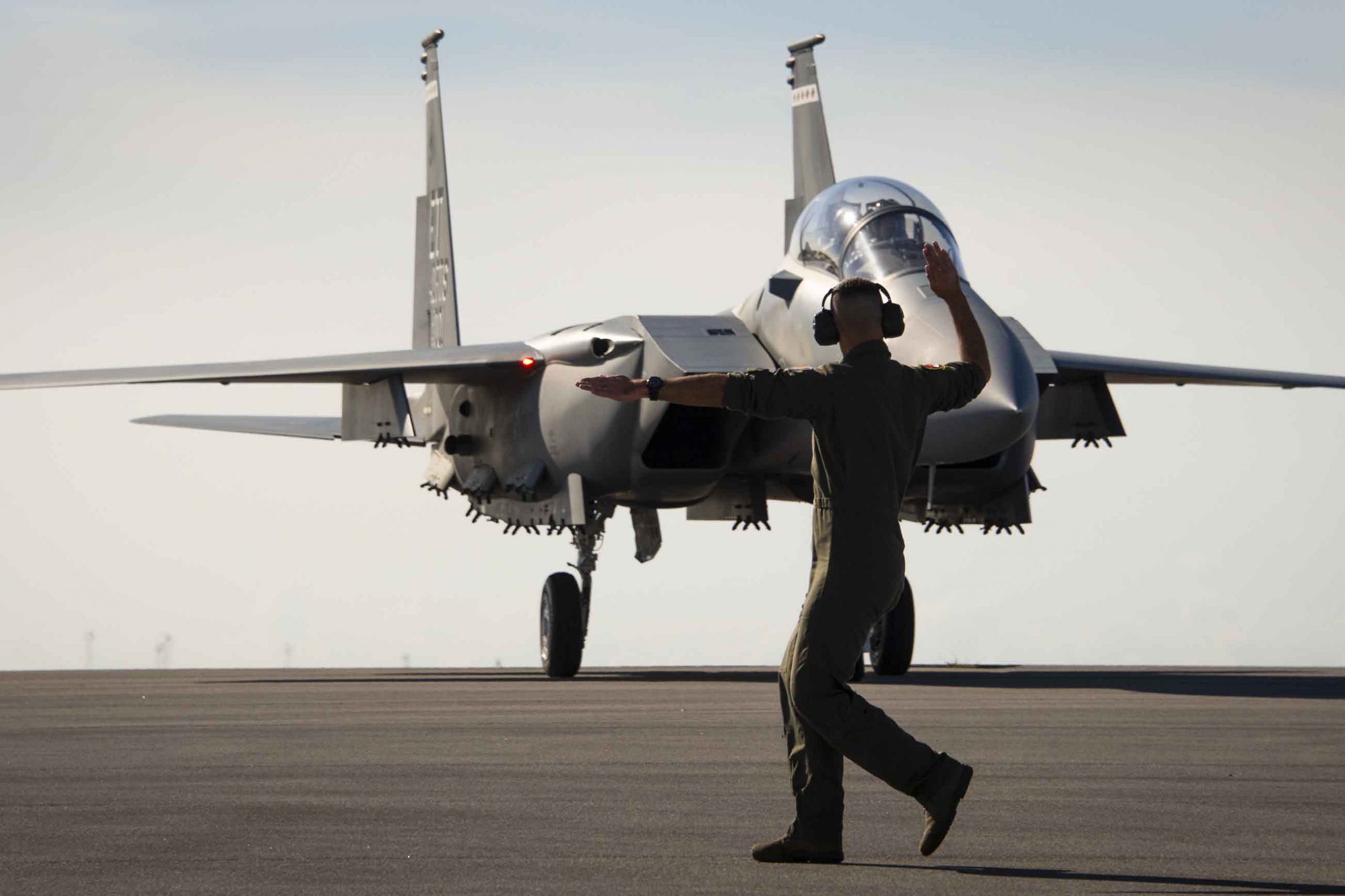The F-35 fighter jet continues its seemingly never-ending struggle with cost overruns and performance troubles (in fact, some were recently grounded after another engine problem). In contrast, the F-15EX continues to prove itself a versatile, more lethal alternative. Measured by range, weapons payload, and lifetime costs, the F-15EX is the best jet.
This reality bears note in that, facing a vast range of global tasks and the expectation of new budgetary pressures, the U.S. military must get the maximum of what it needs versus a range of everything that it and Congress want. Few areas are as important in this regard as that of air power. Air power allows for the protection and advance of ground, naval, command, and enabling forces against the enemy. The big question: Which fighter jet is best suited to helping win a major conflict this decade?
CHINA RIGHTLY LAMENTS JACINDA ARDERN’S RESIGNATION
The F-22 air superiority fighter’s production line was shut down by former Defense Secretary Robert Gates, so that’s a nonstarter beyond the 100-140 F-22s that could participate in any war. One big consideration is who the fight is against. The three classes of Lockheed Martin’s F-35 strike fighter jet would likely be exceptional against Russia’s limited size and capability of its air forces. The F-35’s stealth features would enable its penetration deep behind Russian lines and the rapid destruction of high-value targets. Because many NATO allies also possess the F-35, its battlefield presence would enable NATO’s sustained overmatch of Russian air defense forces across a very large geographic area.

Facing China, however, Boeing’s F-15EX comes out on top. And China must be the priority for U.S. defense planning and procurement. Analysts increasingly believe Chinese leader Xi Jinping will order an attack on Taiwan before this decade is out, perhaps even within the 2023-2027 window. If the United States intervenes to defend Taiwan, as President Joe Biden has now four times said it would (even if the White House backtracked each time), it will face a very tough fight. A fight it may well lose.
It’s the People’s Liberation Army, stupid.
Russian forces in Ukraine have proven themselves unprofessional, poorly equipped, poorly led, and demoralized. Their higher-profile weapons systems have also been shown to be overrated. In contrast, the PLA is motivated, possesses redundant command and intelligence structures, and is well equipped with a large number of highly advanced weapon and sensor systems. What the PLA lacks in battle experience, it makes up for in ideological tenacity.
U.S. aircrews would face two challenges against China that they wouldn’t face with Russia. First, distance. Former President Rodrigo Duterte worked hard to make the Philippines a colony of the Chinese Communist Party. While incumbent President Ferdinand “Bongbong” Marcos Jr. has taken tentative steps to improve the country’s relationship with the U.S., it’s questionable whether the Philippines would allow American forces to operate from its soil during a war with China. That means U.S. fighter forces would be heavily reliant on bases in Japan, especially Okinawa, and, less likely, upon airfields on seized artificial islands China has built in the South China Sea. U.S. aircraft carriers would likely remain well outside of the South China Sea and the East China Sea during at least the early stage of any war, in fear of being smashed by dozens of independently targeted Dong Feng anti-ship ballistic missiles. But against scaled PLA forces, the U.S. would need aircraft to stay in the battlespace for as long as possible, so as to hold PLA forces at risk while also identifying targets of opportunity.
‘WHERE’S THE OTHER FOUR?’ OR WHY WE NEED A DEFENSE INDUSTRY REVOLUTION
That takes us back to the F-15EX vs. F-35 conundrum. The U.S. cannot afford to buy both aircraft at scale. Even if it could, Congress wouldn’t appropriate the sums needed. But while the F-35 has stealth characteristics that the F-15EX does not, that’s its only real advantage. Evinced by the fact that China has now deployed its J-16 strike fighter to all five of the PLA’s theater commands, China’s battle doctrine centers on using weapons and forces at scale versus caution and stealth.
With that in mind, consider the F-15EX and F-35 when it comes to weapons payload. This factor would matter a great deal for U.S. forces facing a vast number of PLA aircraft and warships operating very close to their Chinese mainland bases. Fortunately, the F-15EX this month demonstrated it can carry up to 12 air-to-air missiles. It can also carry long-range, anti-ground missiles such as the JASSM-ER and likely also the LRASM anti-ship missile. In contrast, even newer production-line F-35s will only be able to carry eight missiles (and only six missiles without sacrificing their stealth profile). They will also have to carry the large JASSM-ER and LRASM on their stealth-defeating external bays.
True, the F-35 has superb data-sharing capabilities that allow it to operate as an intelligence platform as much as a strike fighter. It also has a secretive new radar system, the APG-85, which may be exceptional. But the F-15EX has its own upgrades. Its new EPAWSS electronic warfare suite, for example, will greatly support the jet’s survivability proximate to China (a greater concern for U.S. naval forces).
Then there are the range and lifetime costs. The F-15EX’s combat radius, or effective range, is hundreds of miles greater than that of the F-35. Even assuming F-35 cost overruns are controlled going forward (they almost certainly won’t be), when maintenance costs and the expected lifespan of each aircraft are considered, the F-35’s lifetime cost is significantly higher than that of the F-15EX.
Put simply, if the U.S. wants to maximize its chance of defeating China in war, it should dramatically increase orders of F-15EX fighter jets and dramatically reduce F-35 orders. (Congress should also resist Boeing’s lobbying efforts to buy more F-18 Super Hornets that the Navy doesn’t want.)





